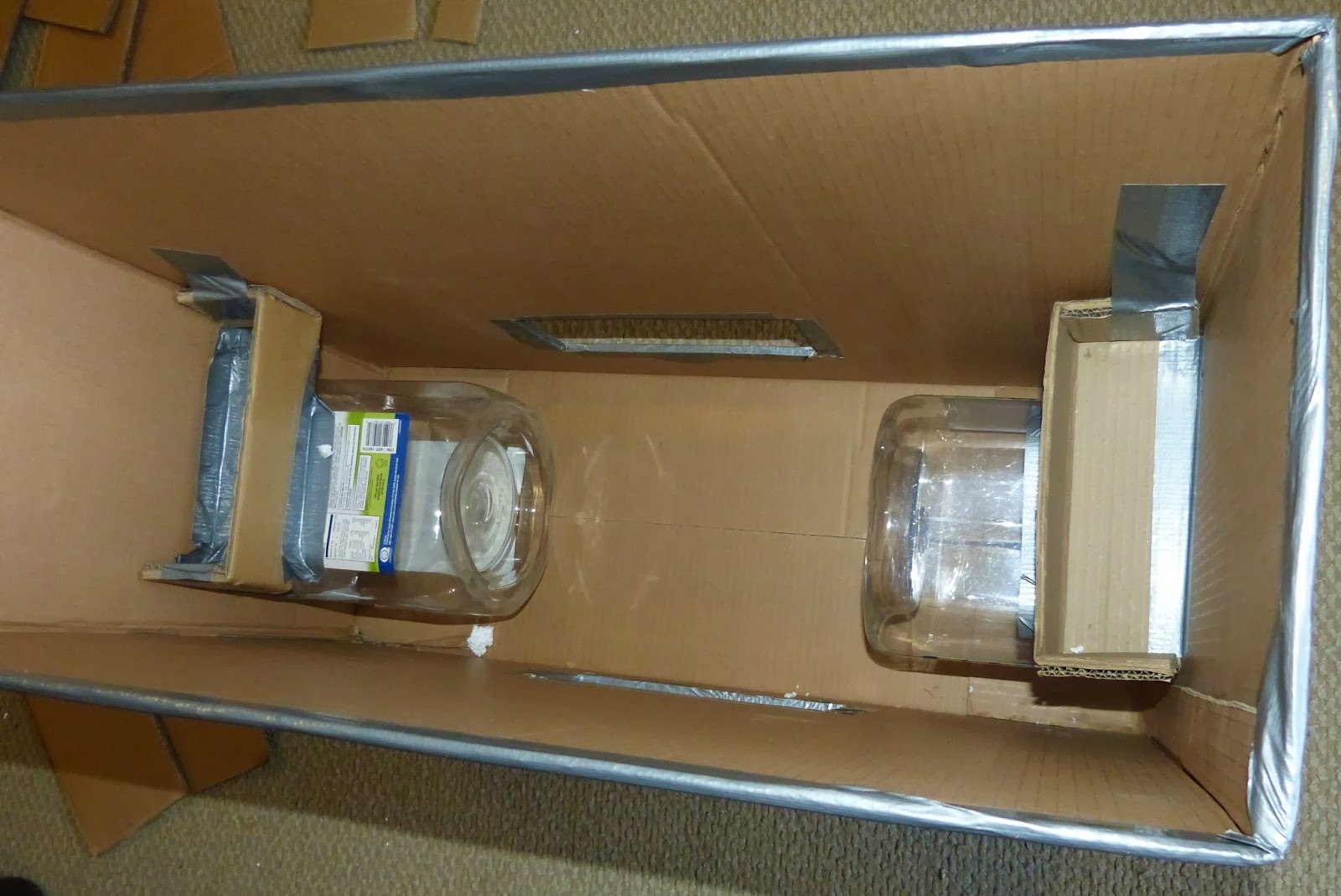Anyone who has a child has probably experienced their child playing for hours with a box, rather than the toy that came in it. Boxes, like balls, blocks and sticks, are open ended materials. With imagination, a box can be anything.
I've been inspired by Tom Bedard's box play ideas for children, which you can see on his blog, tomsensori.blogspot.com. His axioms of sensory motor play really ring true, so over the course of the last year I have tried to incorporate more of this kind of play into our school days. The children love it, and consistently return to this kind of play, so I believe it feeds a need in them.
This week I was gifted a rather marvelous set of boxes that fit within each other. I decided to make a creation, and to document the process. Many times I'll make my creations with the kids around me, because I believe they can learn by observing the process, they love to make suggestions and help make decisions, and because I want them to see that tools are not just for men. This time the kids were out for the weekend, and I didn't want to wait to play with the boxes, so I went ahead and created.
My materials, spread out for easy visibility and access, and no need to keep the knife or anything else out of the way of kiddos.

I wanted to have upright tubes for the children to put the seeds in, but realized my tubes were much too tall for the children to reach. I cut the cardboard tube in half.
Looking down inside the box. You can see the plastic bottles, and small end supports on top of them. I had to raise the inner box a little, so seeds dropped down the tubes could clear the plastic bottles rather than becoming stuck.
I taped the tubes in place from the top and the bottom - the holes in this layer were almost the perfect size for the tubes!
Ta-da! 90 minutes and 12 yards of duct tape later, I had a really cool box, with several different possible configurations.
My 14 year old son and I "tested" it out - and found that too many seeds bounced out of the holes on the sides. By watching carefully, he realized that the angled corners of the plastic bottles were pointed right at the openings. We added a duct tape "curtain", which worked beautifully to contain the seeds.
On Monday morning the real testers arrived. It was a hit!
You might wonder if preschool kiddos could really learn anything through this sensory play, or if it is just for fun. This kiddo scooped 2 containers of seeds, and pronounced them "equal". He then added another scoop of seeds to one container, and said they weren't equal anymore.
There is a lot of fine motor development happening here, as the children carefully pick up beans both by scooping and with a pincer grasp. The children have to communicate and cooperate as they share access to the box. As they scoop and pour seeds into different containers, the children are beginning to develop a sense of volume, using words like more and less as they compare quantities of seeds. We definitely practice cleaning up afterwards!
This box has been played with almost constantly this week. Eventually the kiddos will tire of this configuration, and choose it less often. That's when I'll know it is time to change out something - perhaps the box configuration, or the medium they're playing with, or even the tools available to scoop. Who doesn't like a box?!










No comments:
Post a Comment